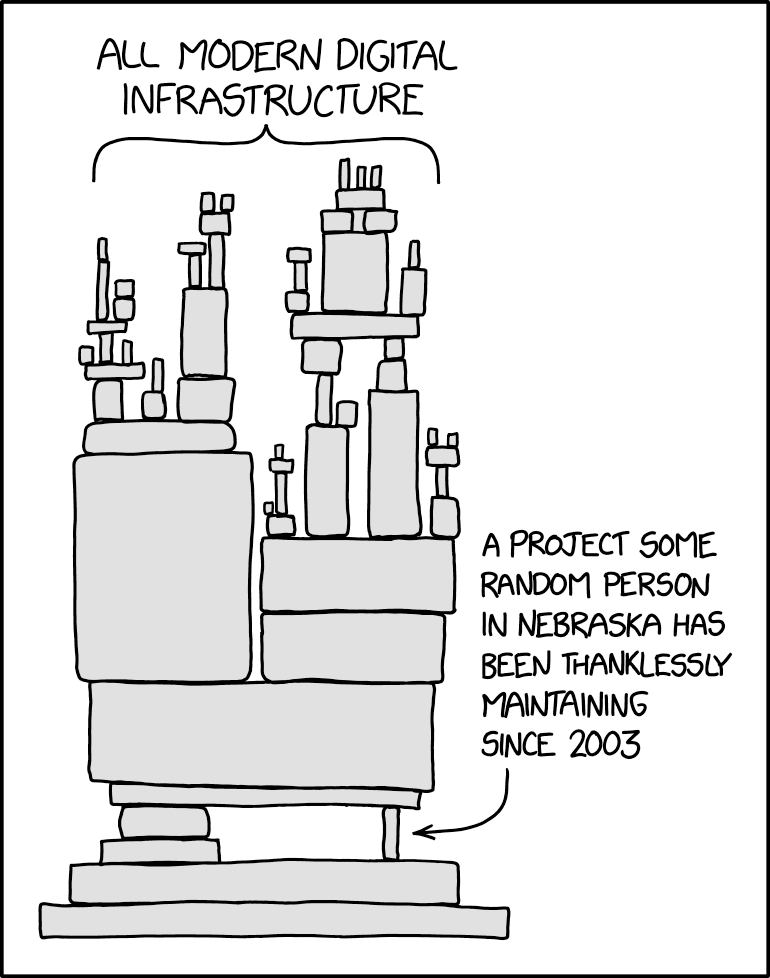- 0 Posts
- 70 Comments

 4·4 months ago
4·4 months agodeleted by creator

 7·5 months ago
7·5 months agoThat just made me imagine a Rust rewrite of systemd
What about the installer? Anaconda isn’t great, but you only need about 1 minute to set the options to install and then let it do it’s job before rebooting.
I’ve been using a Raspberry Pi 400 with LibreELEC installed. Mostly watch 4K HDR Blu-ray Remuxes that I have on another machine with a Samba server. Works really well for me.
Another good option would be to have Jellyfin on a media server and cast to the TV or use the TV directly if it has a Jellyfin app (I know there are official apps for Roku and WebOS (LG)). Jellyfin is similar to Plex but open-source and fully local (no need for an external account).
Of course, this is only works for local media. For streaming, just use a Chromecast.

 71·6 months ago
71·6 months agoYou can’t. Just wait for it to be stable
It’s priceless
A line of code that enables the backdoor was out present in the tarball. The actual code was obfuscated within an archive used for the unit testing.
I like the way kde does it. On first install it gives a slider with how much analytics you want to send. I just do all of it because I trust KDE, but it’s nice that it asks you. They probably have some pretty good data.

 3·7 months ago
3·7 months agoI imagine you could find a lot of options. Just a quick google turned up ThinStation, which only needs 30-50MB if storage and 64MB+ of RAM. A bit outdated, but should work fine.
You could also make your own OS with LFS if you want to optimize it to the extreme.

 13·7 months ago
13·7 months agoChrome is actually doing a lot of work to display modern webpages though. A thin client only needs to receive a video stream and send inputs to a server. That can be done with an extremely low memory footprint. The Steam Link only had 512MB of RAM and it actually ran a steam client (which contains embedded chromium) instead of acting as a pure thin client.

 43·8 months ago
43·8 months agoOr just use the chain that literally every hotel room has on the door.

 20·8 months ago
20·8 months agoYeah, it looks like that little Jenga block from the xkcd meme was XZ and a bunch of infrastructure is gonna have issues because of it.


 10·8 months ago
10·8 months agoWe also need support for the new protocol in Nvidia’s driver. Support will be available in driver 555, the beta of which will be released on May 15. So there’s still some time to wait until it’s fully fixed.

 37·8 months ago
37·8 months agoThe Nvidia driver on Wayland has been decent for a couple of years and stabilized a lot over the past ~6 months. The flickering issue was specific to XWayland. Normal Wayland apps don’t have flickering problems (not quite sure why tbh), but XWayland apps would often rapidly flicker between 2 frames since it only supported implicit sync, which confused the Nvidia driver, which only supports explicit sync. Now with a Wayland protocol for explicit sync, XWayland can be updated to support it and resolve the flickering there.

 2·8 months ago
2·8 months agoJust use the docker container

 361·8 months ago
361·8 months agoI used to use this when I still had a hard drive, but this does nothing for performance if you’re on an SSD and profile writes are so few with browsers that it doesn’t significantly affect drive wear. In the end, all this does is make it more likely that something will break.

 2·9 months ago
2·9 months agoIs anyone doing 4K at above 60Hz with the steam deck? I highly doubt it.

 3·9 months ago
3·9 months agoYour info is outdated. DP 2.0 is 80 Gbps can do 4K@240hz without display stream compression. It can do up to 16K@60hz using DSC.

Of all the distros out there, they went with Mint?